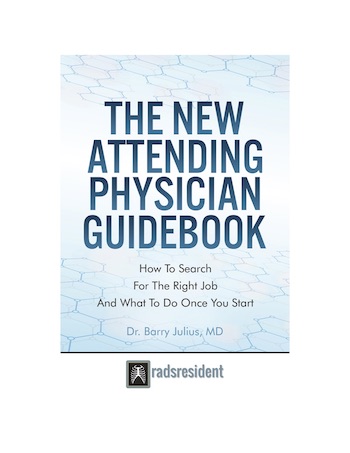
With the increasingly hot job market for new radiologists, medical student applications to residency programs have steadily increased over the past several years. But that got me thinking. Is the specialty of radiology better off with more hardcore medical students wanting to enter the profession? Or does radiology benefit more from residents who genuinely want to be here when times are tough? So, let’s go through the advantages and disadvantages of having both a competitive and a non-competitive application process. And then, we will come up with a conclusion to the final question: Is the specialty of radiology better off with increased competition?
What Happens With A Competitive Application Process
Advantages
From a program director’s perspective, let’s begin by saying that a program director’s job becomes much easier with increased competition. To find applicants, you do not have to interview as many candidates. And the applications tend to have fewer “blemishes.” That said, as much as it helps me, this factor impacts the specialty very little.
So, what other advantages does a competitive process offer? First, the candidates will often have more experience in research. But does this create better radiologists? Depending on whether the resident wants an academic career, that is up for debate. However, I can say that it again makes the program director’s job a little bit easier because the faculty do not need to teach some of the primary research mechanics to get them started. Additionally, this resident will also likely produce more research during residency.
With increased competition, residents tend to be slightly more attentive to keeping up with reading. Moreover, these residents tend to be more motivated by passing tests. In other words, they may be a bit more “obsessive-compulsive.” Now, this would theoretically work in favor of passing the boards. However, according to the infinite wisdom of the test makers (the ABR), this doesn’t change the pass rates since they opt to create tests based on curves, not content.
Disadvantages:
Over the years, I have noticed that competition also motivates applicants who want radiology because of the competition, not necessarily for the love of radiology. In the long run, this can lead to increased burnout. Furthermore, it can change the culture of radiology residency and radiologists into a less forgiving and highly pressured environment. Again, this is more of a tendency rather than a truism.
Increased competition also brings out fewer nontraditional applicants to radiology. These include folks who have completed other residencies and different careers. In the setting of increased competition, they have a much harder time receiving interviews because programs often screen them out of the system due to their increased time in or before residency. However, nontraditional applicants bring a different perspective to residencies. Moreover, they have been through more, are more mature, and often make better leaders.
What Happens With A Non-competitive Application Process
Advantages
Residents who apply during a less competitive time are a different group of candidates. I like to call them type B personalities. These folks create a less pressured environment and a calmer culture for the residency program. This decreased stress can make the four-year residency process more tolerable for everyone.
Likewise, during tough times, the limited selection of candidates forces residency programs to accept nontraditional candidates. As stated, these candidates lend a mature perspective to a residency program. In addition, these residents want to be involved in radiology for the love of the specialty rather than the competition and the “great” job market.
And then, programs will often downgrade their expectations of these non-competitive residents. Decreased expectations lower the pressures on the residents during their program and can create a less harried culture with reduced burnout.
Disadvantages
I don’t have the statistics to back this up. But, from my experience, tough times lead to residents with a higher dropout rate. Sometimes, these residents cannot meet the rigorous academic challenges of residency. When this occurs, residencies can lose their precious spots to other specialties like primary care.
Also, these residents have overall less experience with research. So, most residencies with non-competitive applicants will create less output during these challenging times. (This is a disadvantage for the more academic residency!)
And then, finally, residencies have more work cut out for them. They must put more time into teaching and spoon-feeding the residents to ensure they complete the program.
Weighing The Balance- Is Increased Competition Better For The Specialty?
So, where do I stand in this controversy? Well, residency directors and their programs must put more work into the residents during the “tough” years to get them “up to snuff.” But, you know, I’ve seen great residents during the lean times and times of abundance. So, I think we put more emphasis on competition to get better residents than we should. In the end, good residencies mold their residents into great radiologists regardless of the zeitgeist of the times. And that’s the way it should be!






